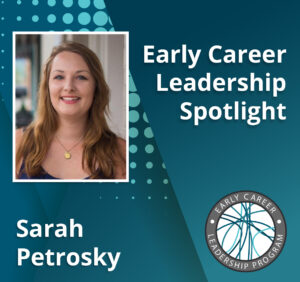Just like Thomas Hunt Morgan, Paul Sternberg’s scientific legacy dominates many fields of biology, including embryology, evolution, genetics, neuroscience, and systems biology. Sternberg, who is Professor of Biology at California Institute of Technology and Investigator Emeriti at Howard Hughes Medical Institute, studied parasitic nematode worms to make important discoveries in comparative development across different worm species and their behavior.
Unraveling fundamentals of worm biology
During his undergraduate studies, Sternberg wasn’t particularly interested in science, but classes in quantum mechanics and microbiology attracted him to logic and exploration. He enrolled in mathematics and economics with the hope of applying relevant lessons to complex systems, but “…then I realized you can’t really do experiments in economics. I thought there is an interesting complexity in biology too, so I chose biology,” says Sternberg. As an undergraduate, Sternberg was looking at cell cycle control in slime molds. “By the time I was a graduate student, the worm appealed to me, and I wanted to understand everything about the organism. That is the goal,” he shares enthusiastically.
During his PhD, Sternberg contributed to groundbreaking work in the evolution of cellular lineages and developmental mechanisms for the induction and patterning of worm vulva. “When he was a student, his interest in the evolution of development was way ahead of his time. In the cell lineage paper by John Sulston and colleagues that reported the first comprehensive embryonic lineage analysis in 1983, they cited papers from Sternberg as a student in the Horvitz laboratory, identifying evolutionary changes in nematode cell lineages and cell fate. While Horvitz and Sulston received the Nobel Prize for their lineage work, Sternberg was also dissecting lineages in another genus and investigating how lineages would evolve. In that sense, he was prescient and visionary,” says Ryan Baugh who did his Postdoctoral training with Sternberg and is now a Professor of Biology at Duke University.
Continuing the vulva development paradigm in his independent research group, Sternberg cloned and mapped numerous receptors and ligands, determining their functions in the signal transduction pathway. This pioneering work is taught today in introductory genetics and developmental biology courses to illustrate intercellular signaling, transcriptional regulation, and genetic epistasis mechanisms in coordinated organ development. Additionally, his students showed the importance of vulva development genes in the male mating structure called hook formation, further demonstrating conserved gene function in different organ patterning.
Sternberg also solved the mystery of the chemotaxis of males to the hermaphrodites, which many believed had no specificity. “People would say, male worms mate with chunks of agar. We looked at different species and found specificity. Hermaphrodites in a conditioned media would give pheromone signals that the males would respond to,” explains Sternberg. He collaborated with chemists to assess the chemical nature of purified mating attractants and discovered nematode-specific chemicals called ascarosides. Over the years, he made discoveries surrounding how males sensed ascarosides and nutrients in their environment to determine whether they should reproduce or wait. Using transcriptomics and CRISPR to knock out multiple genes, he continues to identify neuronal signaling in the pheromone sensing process.
In his quest to understand the worm, Sternberg studied multiple nematode species. His major interest is identifying lineage differences in species different from C. elegans, a commonly studied worm species. “We collected a lot of nematodes from soil and worked with a professional taxonomist, who figured out whether they are a diverse set of worms. Over the years, my students performed numerous comparative developmental analyses and started their research programs,” says Sternberg.
Behavioral genetics is another field where Sternberg has made a huge impact. “What is the most complicated thing the worm does in the neuroscience sphere? The male mating behavior seemed pretty complicated to me,” shares Sternberg on how he focused his research. Sternberg’s student ablated each male-specific neuron using the knowledge from lineage maps and identified neuron-specific mating behavior defects. Observations from male mating behavior led him to investigate complex behavior like sleep, where he discovered several neuropeptides and signaling molecules controlling sleep in worms. To further strengthen the idea of sleep in invertebrate model organisms, Sternberg says, “I thought to push the defensive perimeter out in phylogenetic evolution in some primitive organisms. We studied jellyfish and found sleep-like states in them.”
According to Baugh, “It is really impressive that he went into neuroscience and behavior in addition to the evolution and development and trained important leaders in that field. I am seeing whole swaths of biology that are monumental as most people would hope to accomplish in their careers. He has just done it many times over.”
A community builder and a problem solver
Sternberg is also a visionary when it comes to building a scientific community and solving problems related to resource sharing and knowledge dissemination as well as developing new tools. “He sees a problem, and he fixes it,” says Maureen Barr, Professor in the Department of Genetics at Rutgers University, who did her postdoctoral research with Sternberg. “The C. elegans genome database was difficult and frustrating to navigate. Sternberg wanted to fix it, so he made WormBase. There are just too many papers – it’s not humanly possible to read them all, so he made Textpresso, which provides detailed information based on a few keywords. There are negative results in science that others might be interested in knowing, so he created microPublication where researchers can publish brief, novel findings and negative results that may not fit a traditional research article,” says Barr. Sternberg actively runs and supports these irreplaceable tools that make science accessible.
Join us in congratulating Paul Sternberg, who received the Thomas Hunt Morgan Medal at The Allied Genetics Conference 2024 in Metro Washington, DC.
2024 GSA Awards Seminar Series
On July 30, at 1:00 p.m. EDT, Paul Sternberg will join us to describe how C. elegans as an extensively-studied research organism holds out the promise of achieving comprehensive understanding of an organism. He will also discuss the status of our knowledge of how a genome sequence specifies the properties of an organism in the context of state-of-the-art technology and cool biology. Save the date and register here!

Sejal Davla, PhD, is a neuroscientist, science writer, and data scientist with expertise in research in a variety of life sciences. She has more than a decade of experience studying the brain by using cutting-edge methodologies in microscopy, molecular biology, genetics, and biochemistry, and is a motivated storyteller and science communicator.































